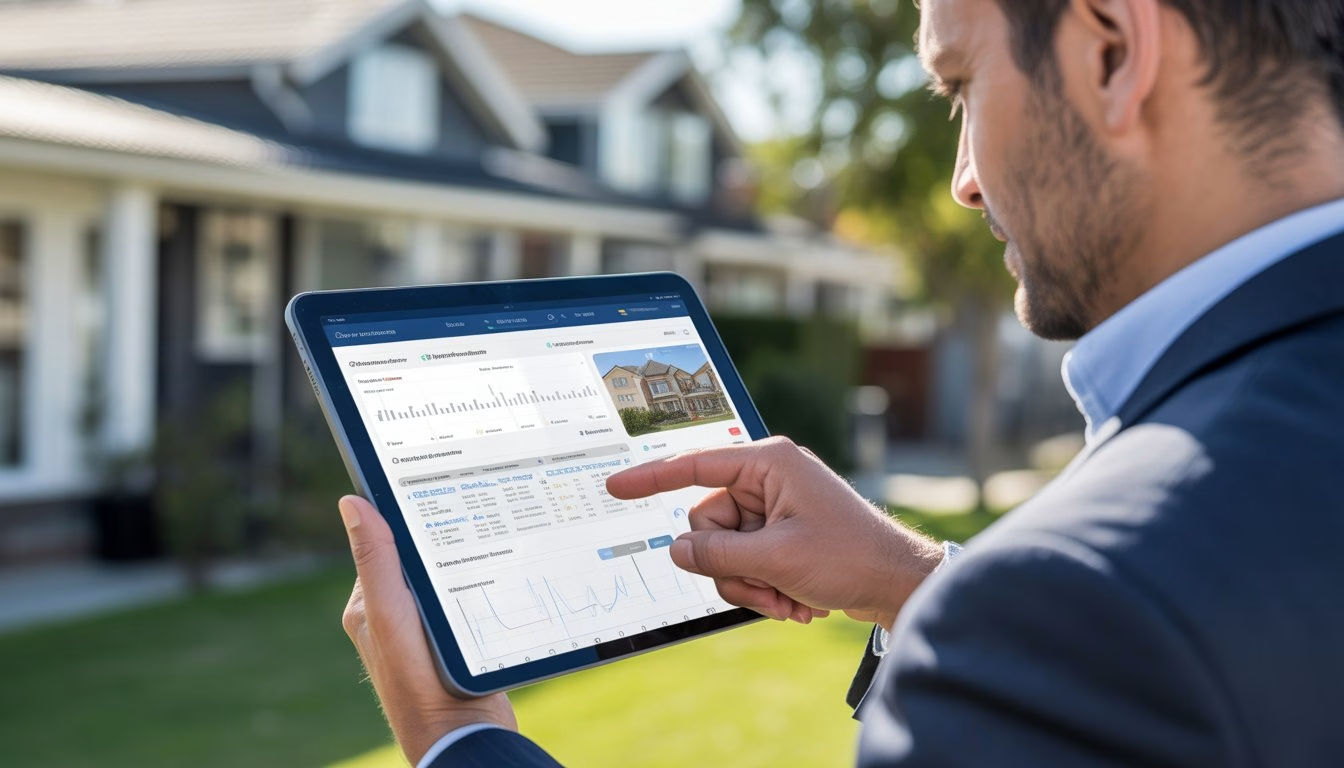Real estate financial modeling is a crucial skill for developers, investors, and analysts in the property sector. It involves creating detailed spreadsheets to forecast cash flows, evaluate investment opportunities, and assess risks associated with real estate projects. By mastering real estate financial modeling, you can make informed decisions and maximize returns on property investments.
Excel-based models are commonly used to analyze various aspects of real estate deals, including acquisitions, renovations, and new developments. These models incorporate key metrics such as net operating income (NOI), capitalization rates, and absorption rates to provide a comprehensive view of a property’s financial performance over time.
To build effective real estate financial models, you’ll need a solid understanding of Excel functions, real estate terminology, and financial concepts. Many online resources and courses are available to help you develop these skills, offering templates and step-by-step guides for creating dynamic cash flow projections and pro forma statements.
Key Takeaways
- Real estate financial modeling enables data-driven investment decisions
- Excel is the primary tool for creating comprehensive property analysis models
- Developing modeling skills requires knowledge of finance, real estate, and spreadsheet functions
Fundamentals of Real Estate Financial Modeling
Real estate financial modeling is a critical skill for investors and developers. It involves analyzing property investments, projecting cash flows, and assessing potential returns. Key areas include understanding real estate concepts, investment types, and financial modeling techniques.
Understanding Key Real Estate Concepts
Net Operating Income (NOI) is a crucial metric in real estate analysis. It represents the income generated by a property after deducting operating expenses. To calculate NOI, subtract all operating expenses from the gross income.
Capitalization Rate (Cap Rate) measures a property’s potential return on investment. It’s calculated by dividing the NOI by the property’s market value. A higher cap rate typically indicates higher risk and potentially higher returns.
Loan-to-Value (LTV) ratio is the percentage of a property’s value financed through debt. Lenders use LTV to assess risk. A lower LTV often results in better loan terms for borrowers.
Types of Real Estate Investments
Residential properties include single-family homes, apartments, and condominiums. These investments often provide steady rental income and potential appreciation.
Commercial real estate encompasses office buildings, retail spaces, and industrial properties. These typically offer higher returns but may involve more complex management.
Mixed-use developments combine multiple property types, such as residential units above retail spaces. They can provide diversified income streams and mitigate risk.
Real Estate Investment Trusts (REITs) allow you to invest in real estate without direct property ownership. REITs offer liquidity and professional management but may have lower returns compared to direct investments.
Financial Modeling Overview
Discounted Cash Flow (DCF) analysis is a fundamental technique in real estate modeling. It projects future cash flows and discounts them to present value, helping you assess an investment’s potential profitability.
Sensitivity analysis allows you to test how changes in variables affect your investment’s performance. You can adjust factors like rental rates, occupancy levels, or interest rates to see their impact on returns.
Monte Carlo simulation is an advanced modeling technique. It runs multiple scenarios with varying inputs to provide a range of potential outcomes, helping you understand the risk profile of an investment.
Excel is the most common tool for real estate financial modeling. It offers flexibility and powerful functions for creating complex models. Specialized software also exists for more advanced or industry-specific modeling needs.
How To Develop a Real Estate Financial Model
Developing a real estate financial model requires careful planning and attention to detail. You’ll need to structure your model logically, input accurate assumptions, calculate key financial metrics, and account for various financing scenarios.
Setting Up the Model Structure
Start by creating separate worksheets for different components of your model. Include sheets for assumptions, revenue projections, operating expenses, debt financing, and equity investments. Set up a summary dashboard to display key outputs.
Use consistent formatting and color-coding throughout your model. This helps with navigation and understanding. Create clear labels for all inputs and calculations.
Link cells between worksheets to ensure changes propagate automatically. Build in flexibility by using variables for key inputs rather than hard-coding values.
Consider adding data validation and error checks to prevent mistakes. This improves the robustness of your model.
Inputting Assumptions and Projections
Gather reliable market data and property information to inform your assumptions. Input details like property size, unit mix, and expected occupancy rates.
Project future rent growth, operating expenses, and capital expenditures. Be conservative in your estimates to avoid overstating potential returns.
Include toggle switches or dropdown menus to easily adjust key variables. This allows for quick scenario analysis.
Document your sources and reasoning for each assumption. This adds credibility to your model and helps with future updates.
Calculating Revenues and Expenses
Calculate potential gross income based on projected rents and occupancy rates. Account for other income sources like parking or amenity fees.
Subtract vacancy and credit loss to determine effective gross income. Apply annual growth rates to project future revenues.
List all operating expenses, including property management, utilities, maintenance, and property taxes. Factor in inflation for future years.
Calculate net operating income by subtracting total expenses from effective gross income. This is a crucial metric for evaluating property performance.
Debt and Equity Financing
Model different loan scenarios, including varying interest rates, loan-to-value ratios, and amortization periods. Calculate annual debt service and track loan balance over time.
Account for upfront financing costs like origination fees and appraisals. These impact your initial cash outlay.
Project equity requirements and potential investor returns. Calculate key metrics like IRR, equity multiple, and cash-on-cash return.
Create a sources and uses table to show how the property acquisition or development will be funded. This helps visualize the capital structure.
Analysis and Interpretation of a Real Estate Financial Model
Analyzing and interpreting a real estate financial model requires careful examination of key metrics, consideration of various scenarios, and assessment of potential risks. These elements provide crucial insights for making informed investment decisions.
Key Performance Indicators (KPIs)
Net Operating Income (NOI) is a fundamental KPI in real estate analysis. It represents the property’s income after deducting operating expenses, excluding debt service and capital expenditures.
Internal Rate of Return (IRR) measures the profitability of an investment over time. It’s particularly useful for comparing projects with different cash flow patterns.
Cash-on-Cash Return calculates the annual cash flow relative to the initial cash invested. This metric helps you understand the property’s short-term performance.
Capitalization Rate (Cap Rate) is the ratio of NOI to property value. It’s essential for comparing different properties and assessing market trends.
Debt Service Coverage Ratio (DSCR) indicates a property’s ability to cover its debt obligations. A higher DSCR suggests lower risk for lenders and investors.
Scenario Analysis
Base Case scenarios represent the most likely outcomes based on current market conditions and property performance. They serve as a benchmark for other scenarios.
Optimistic scenarios explore potential upside by assuming favorable conditions such as higher occupancy rates or increased rental income.
Pessimistic scenarios examine downside risks by considering factors like economic downturns or unexpected property expenses.
Sensitivity analysis helps you understand how changes in specific variables impact overall project performance. This might include adjusting cap rates, vacancy rates, or operating expenses.
Break-even analysis determines the point at which a property generates enough income to cover all its costs, including debt service.
Risk Assessment
Market risk involves factors beyond your control, such as economic conditions, interest rates, and demographic shifts. Stay informed about local and national trends to anticipate potential impacts.
Property-specific risks include physical condition, location, and tenant quality. Regular property inspections and tenant screenings can help mitigate these risks.
Financial risks encompass leverage, interest rate fluctuations, and refinancing challenges. Maintain conservative debt levels and consider fixed-rate loans to reduce exposure.
Operational risks involve management efficiency and unexpected expenses. Implement robust property management systems and maintain adequate reserves for unforeseen costs.
Regulatory risks include zoning changes, tax policy shifts, and new environmental regulations. Stay informed about local laws and engage with industry associations to anticipate potential changes.
Case Studies and Practical Application

Real estate financial modeling comes to life through hands-on case studies. These examples demonstrate how to apply modeling techniques to evaluate investment opportunities and make informed decisions.
Residential Development Case Study
You’re analyzing a potential residential development project in an up-and-coming neighborhood. The land costs $2 million, and construction is estimated at $8 million over 18 months. Your model projects 20 townhomes selling for $750,000 each.
Key inputs to consider:
- Construction timeline and phasing
- Sales absorption rate
- Financing terms (65% LTC at 6% interest)
- Soft costs (10% of hard costs)
Your model calculates an IRR of 22% and an equity multiple of 1.8x over a 3-year period. Sensitivity analysis reveals that a 10% decrease in sales prices would reduce the IRR to 15%.
Commercial Acquisition Case Study
You’re evaluating the purchase of a 100,000 sq ft office building for $30 million. The property is 85% occupied with a mix of tenants and varying lease expiration dates.
Critical model components include:
- Rent roll analysis
- Vacancy and credit loss assumptions
- Operating expenses and capital expenditures
- Debt sizing (70% LTV, 4.5% interest rate)
Your 10-year cash flow projection shows an unlevered IRR of 8% and a levered IRR of 12%. The model highlights the impact of upcoming lease expirations and potential renewal scenarios on overall returns.
Ever wish you could analyze properties like the pros?
Save time and make smarter investment decisions with the most powerful real estate analysis software on the market. Try DealCheck now!

If you want to be a successful property manager, then Achieving Financial Success as a Property Manager: An Insider’s Guide is for you!
This invaluable resource provides all the essential information and strategies you need to excel in the rental property management industry.
Don’t wait – get your copy now from your favorite bookseller:
- Amazon
- Books2Read for Apple, Barnes & Noble, Kobo, Scribed, and 8 more sellers with both eBook and paperback options available
- Payhip as a PDF
You can also:
- Visit our learning center
- Learn more about our consulting services
Content created by J. Scott Digital freelance copywriting services.



